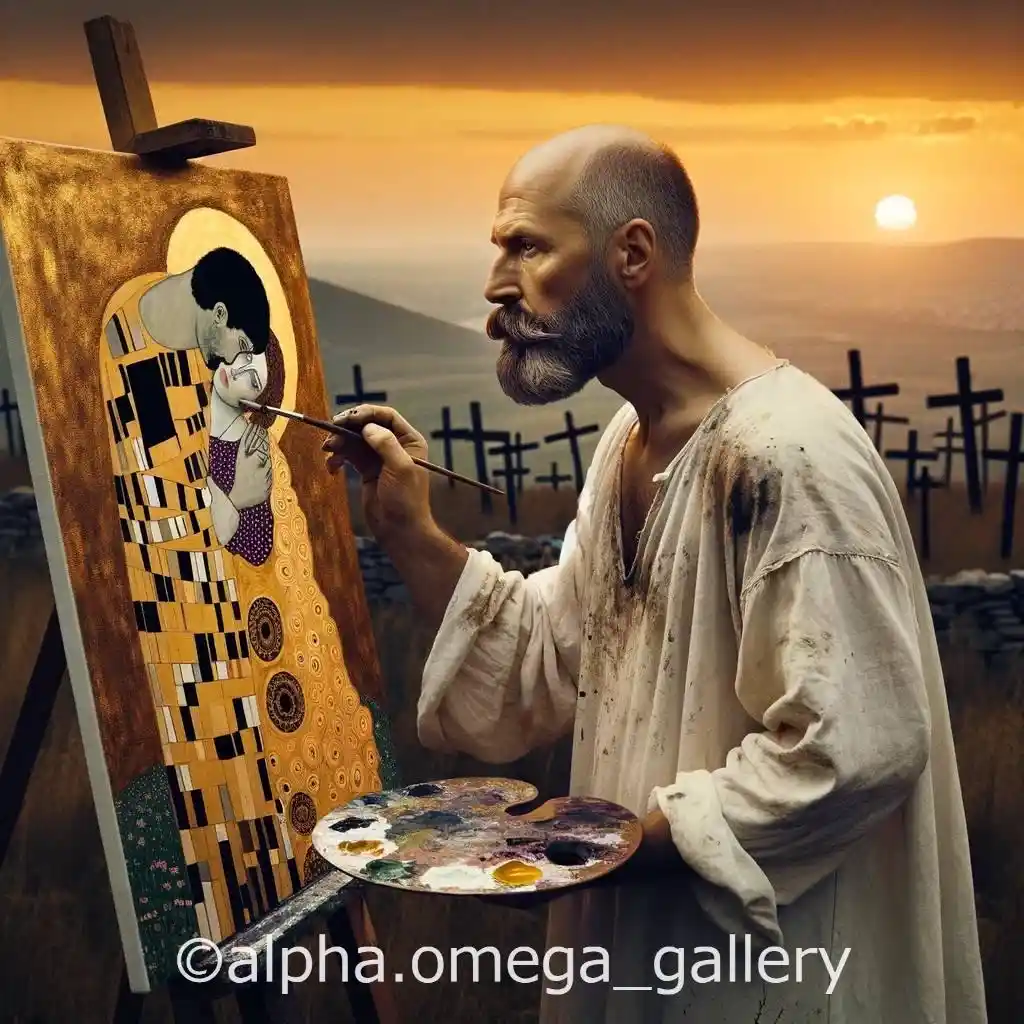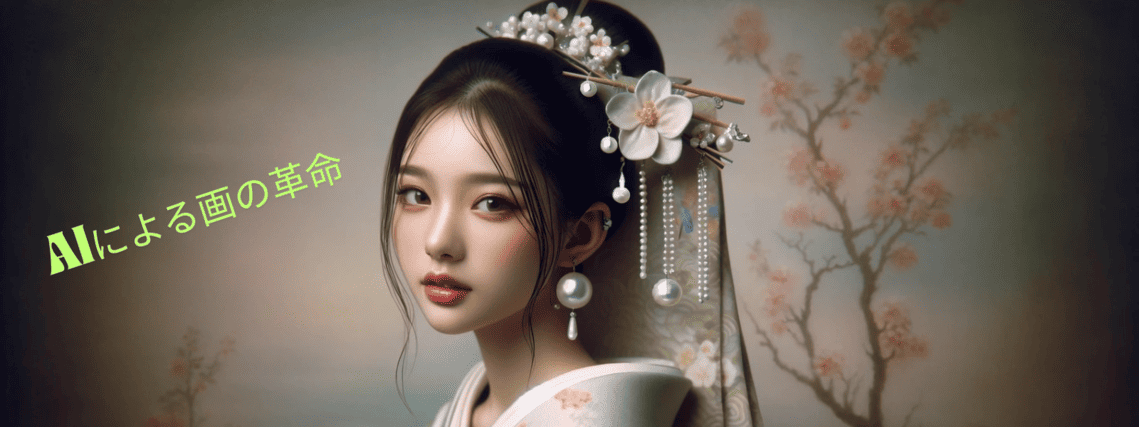On a Hill Lined with Crosses: Klimt Painting ‘The Kiss’ (Reinterpretation)
2025.02.03投稿
広告

Reinterpreting a masterpiece is one way to offer fresh perspectives and deepen our understanding of art. In this instance, we explore Gustav Klimt’s The Kiss as though it were being painted on a hill studded with crosses. Through this reinterpretation, we examine both the allure of the original masterpiece and the significance of this new approach.
First Impressions of the Reinterpreted ‘The Kiss’
This reinterpreted image makes a profound impact. At sunset, on a hill lined with crosses, Klimt is shown painting his own iconic work, ‘The Kiss’. The desolate setting and the artist’s determined expression endow the scene with deep emotion and drama.
About the Original Painting ‘The Kiss’
Title
‘The Kiss’
Author
Gustav Klimt
Year of Production
1907–1908
Historical Background
The Kiss was painted by Gustav Klimt during his “Golden Period”, while he was a leading figure of the Vienna Secession. Active from the late 19th to the early 20th century, the Vienna Secession was a movement that sought new forms in art and design, and Klimt served as a prominent symbol of its ideals. The Kiss explores themes of love and intimacy, distinguished by its lavish decorative elements and symbolic representation.
Key Features
– Gold backgrounds and ornamentation
– Two figures symbolising love
– Mosaic-inspired patterns
– A seemingly flat yet richly textured appearance
Key Points of the Reinterpretation
In this reimagined version, the backdrop painted by Klimt takes centre stage. On a hill dotted with crosses, The Kiss continues to convey themes of love and intimacy, but is now imbued with a sense of melancholy and introspection. Furthermore, the interplay of sunset light and shade heightens the solemnity of the overall scene.
Reflections on the Reinterpreted Image
This reinterpretation adds a new layer of depth to the original themes of The Kiss. The crosses on the hill evoke ideas of death, sacrifice, and sorrow. In contrast, Klimt’s two figures stand out as symbols of love and solace. This interplay of opposing motifs introduces an additional emotional dimension to the piece, prompting viewers to contemplate the work more deeply.
The Value of Reinterpreting Masterpieces and Potential New Meanings
Reinterpreting a masterpiece is a way of breathing new life into an existing work by placing it within a modern context or offering a fresh point of view. In this image, Klimt’s The Kiss grows beyond a mere portrayal of love, extending to themes of life’s transience and the ever-present shadow of mortality. Such reinterpretations invite viewers to engage with both the original painting and its reimagined version, resulting in a deeper, more moving artistic experience.

